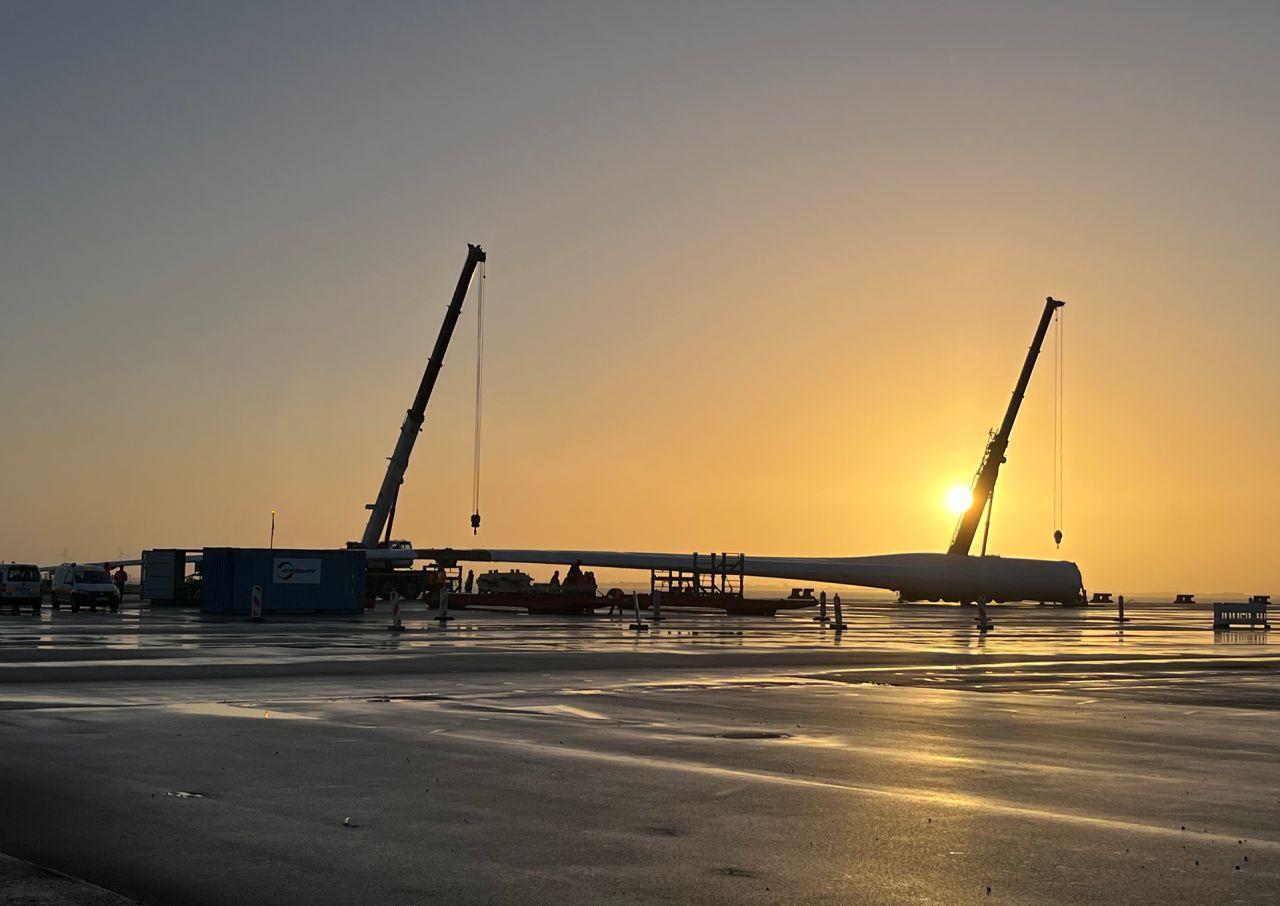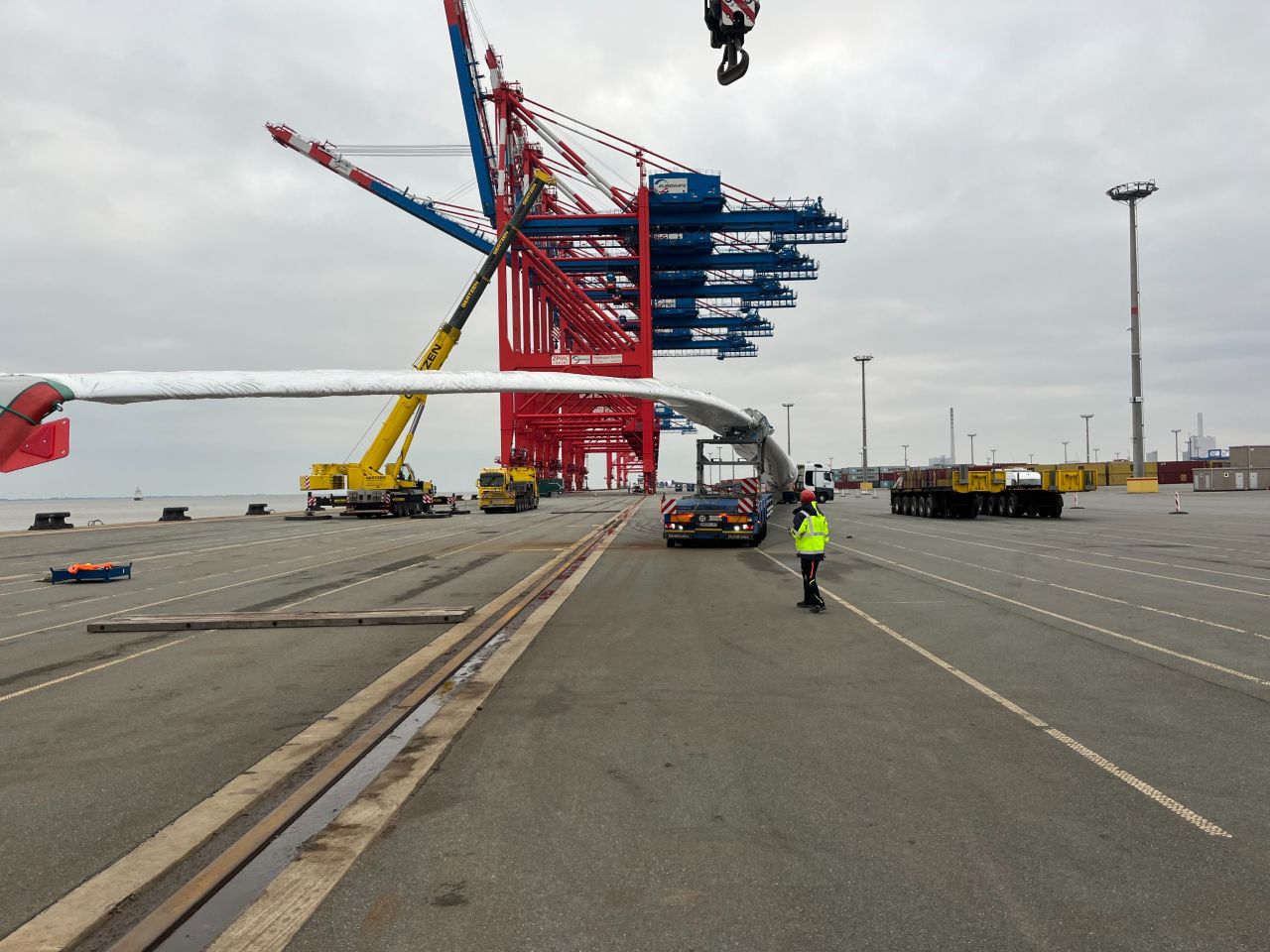Enercon’s wind blade prototype passes heavy transport test

Wind turbine manufacturer, Enercon, has reached a major milestone as it concluded the heavy transport for its E-175 EP5 prototype. Following a multiple-day journey by ship and heavy transport, a prototype rotor blade of Enercon’s new model arrived at the test stand in Aurich.
There, the 86-meter-long component is now being prepared for an extensive test series under the leadership of Enercon Research and Development.
The rotor blade was produced at the Enercon blade factory in Viana do Castelo/Portugal. There it was loaded onto the cargo ship Peak Bergen and transported by sea to the deep sea port in Wilhelmshaven. It was then transported by road to the test stand at the company headquarters in Aurich.

dteq and deugro handled the heavy transport
deugro and dteq Transport Engineering Solutions were on hand to provide expertise and support throughout the heavy cargo transport. The two companies supported the port operations of the prototype blade in Wilhelmshaven, ensuring its quality and safety while coordinating with the relevant stakeholders, and overcoming the challenges and risks of such a complex operation.
Read also: Project cargo specialist deugro steps up focus on renewables
Research & Development, Equipment Design and Logistics already used the first E-175 EP5 blade transport for a series of measurements to validate the transport concept. The test blade was equipped with various measurement technology before transportation. Among other things, sensors determine the loads acting on the component during transportation. The measurement data should provide information on whether the new transport frames, blade clamps and trailing systems developed for the E-175 EP5 blade meet their requirements.
deugro noted the blade passed its first test drive with flying colours at Wilhelmshaven.

Scrutinising the heavy transport concept
The practicability of the transport concept was also under particular scrutiny. “The dimensions of the new blade are the biggest challenge for logistics,” says Lukas Freericks from Technical Engineering & Support at Enercon Logistics.
“The enormous total transport length with vehicle combination requires comprehensive testing and planning of the transport route and the route expansion requirements prior to delivery to the construction site,” Freericks.
During the development process, Logistics therefore simulated and tested examples of critical infrastructure such as highway junctions and carried out an analysis of suitable ship types and means of transport. The transport concept for the E-175 EP5 blade has now passed its first test.
You just read one of our premium articles free of charge
Want full access? Take advantage of our exclusive offer




